Swāmī Parijñānāshram Educational and Vocational Centre for the Handicapped
By Archanā Kumṭā with inputs from Shrī Vinayānand Kalliāṇpur
To see ability in disability – The vision of Karuṇāmayī H.H. Shrīmat Parijñānāshram Swāmī III who loved all beings for who they were.
H.H. Shrīmat Parijñānāshram Swāmī III was a visionary extraordinaire, who alleviated the pain and suffering of all who came in contact with Him. Swāmījī won everyone’s hearts be it children, animals... and differently-abled children. Till the 1980s, the mentally and physically challenged suffered social stigma; not just children, but even their families would face ridicule and humiliation. Children with impairments were either cast aside and often not given the freedom to express themselves and blossom. H.H. Guruswāmī saw this and wanted the differently abled to be given space, time and a platform to study, learn and live life with dignity. Our ever-compassionate Parijñānāshram Swāmījī not only looked out for them but also provided them the means to be useful contributors to society. Swāmījī saw only ability in their disability.
It was a Herculean challenge that the District Rehabilitation Centre (DRC) at Virār placed before Dr. Mohan Maṅkekar in 1985 – They gave him just 15 days to start a Multi-disciplinary School for the differently abled. The seed for such a school was sowed when H.H. Shrīmat Parijnānāshram III had established the Shree Trust in 1981 whose objectives included the education and rehabilitation of differently-abled individuals. So when Dr. Mohan Maṅkekar approached H.H. Guruswāmī, he immediately received Blessings in abundance for the project.
Within the fortnight, all governmental approvals and sanctions came through in an unprecedented manner, clearing the way for the launch of the Shrī Parijñānāshram Educational and Vocational Centre for the Handicapped (SPEVC). With financial assistance and premises granted by the Ministry of Welfare (Government of India), the School began functioning from two barracks originally meant for beggars at the Beggars Home, Virār (East). At the inauguration on 31st October 1985 by H.H. Shrīmat Parijñānāshram Swāmī III, forty dignitaries from various countries who were attending the World Disabled Day Conference were witness to this momentous occasion.
Within a year, the Government of India provided SPEVC half an acre of land in the District Rehabilitation Centre (DRC) premises on a 25-year lease. With blessings of H.H. Guruswāmī, Shree Trust constructed a building (Ground + Two floors) for the differently-abled students. Since the lease could not be extended, Shree Trust moved out after purchasing new premises adjacent to the old building. The Bhūmi pūjana for the new building was performed in the year 2000 by the very same Gurushakti in the form of H.H. Sadyojāt Shaṅkarāshram Swāmījī.
H.H. Guruswāmī’s concern and love knew no bounds. Swāmījī made it a point to attend the Annual day program at the School every year where He would address the parents, teachers and counselors, and also distributed rugs and books to the students of the School. In 1989, SPEVC hosted ‘Apāṅga diwasa’ where all special schools from T͟hāṇe district were invited to compete and perform cultural programs. At this function, H.H. Guruswāmī interacted with the parents and teachers to understand their problems and guided the school administration on ways to improve the institution. Parents and teachers alike looked forward to Swāmījī’s impromptu visits to the school. H.H. Guruswāmī took great interest to watch the children in live classroom sessions where physiotherapists, psychologists, occupational therapists, speech therapists, special educators, counselors worked together towards behavioral modification and overall development of every child through individualized programmes. Swāmījī gave guidance and advice on the procurement of teaching aides and equipment to help with educational and vocational training for the children. The support motivated the trainers to constantly upgrade their skills and give their best at all times.
H.H. Guruswāmī had the amazing knack of finding the right person for every job. Swāmījī persuaded and encouraged Shrī Vinayānand Kalliāṇpur, who was then working as the supervisor at SPEVC, to take a one-year special educator course at the National Institute of Mental Health (NIMH), Mumbaī. With Swāmījī’s blessings and guidance, Shrī Vinayānand Kalliāṇpur went on to become the Principal of the SPEVC in 1989, a post which he held for over 25 years.
SPEVC became the first school in a predominantly rural area where multiple types of disabilities like visual impairment, hearing impairment, orthopedic and mentally challenged were identified, counseled and trained. The children looked forward to coming to this school with a safe and loving environment under the watchful eye of our Guruswāmī. Children between ages 5 to 18 were given educational training as per their ability and capacity, and those above the chronological age of 18 years were absorbed into the Vocational Centre. Swāmījī stressed on giving them development and rehabilitation opportunities i.e. to learn and earn at the same time to make them self-sufficient and financially independent.
H.H. Guruswāmī even encouraged the students to take up horticulture so that they could be gainfully employed in their own or neighborhood farms once they completed their training at SPEVC. With Guruswāmī’s encouragement, “Rejection and Dejection” counseling sessions for parents were held with trained therapists. On many occasions, salary for the staff (sent by Government of India) was delayed. On such occasions, a prayer to Guruswāmī was enough and well-wishers and donors simply materialized wanting to help in cash and kind. Rs. 1200/- was the meager salary of a special educator at the time the school began functioning, and it doubled by 1991. This was possible only because of the guidance and blessings of Parijñānāshram Swāmījī and the hard work and efforts put in by the school administration. In those days, getting qualified teachers with a special education background was next to impossible in the rural area of Virār. But miraculously teachers, visiting faculty, volunteers, well-wishers, donors, physiotherapists, occupational therapists, psychologists, audio-therapists and doctors joined and helped each child find their potential.
Much before the Government of India came up with the mandatory mid-day meal scheme for all school-going children in government-aided schools - Swāmījī insisted that all the children of SPEVC be given free, nutritious, home cooked, mid-day meals to supplement their dietary needs. In 1987, the mid-day meal initiative was started and funded by donations.
All those years ago, H.H. Guruswāmī showed us by example that we, sādhaka-s, should inculcate the ability to see Īshwara’s glory in every creation and every being …. Shuni chaiva samadṛs͟͟hṭā…..
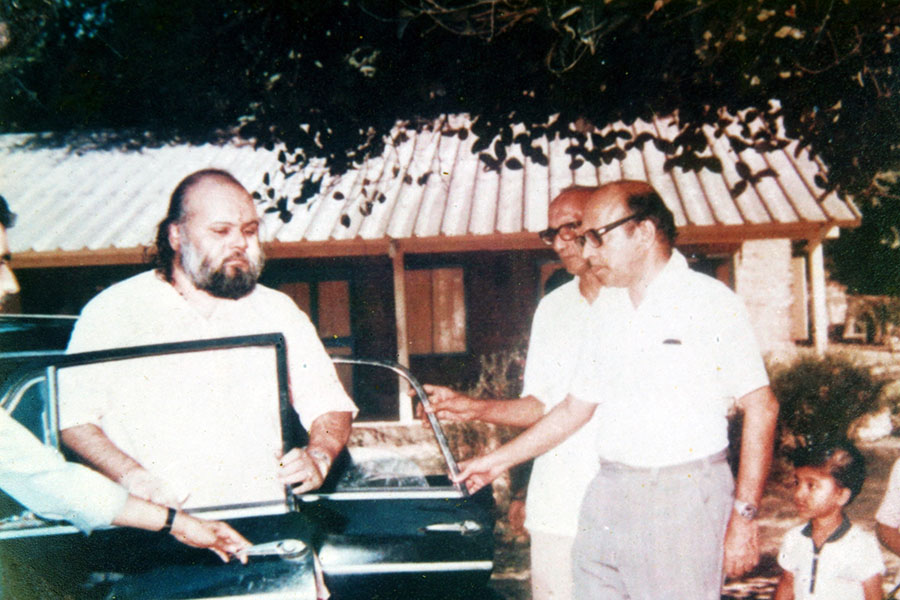
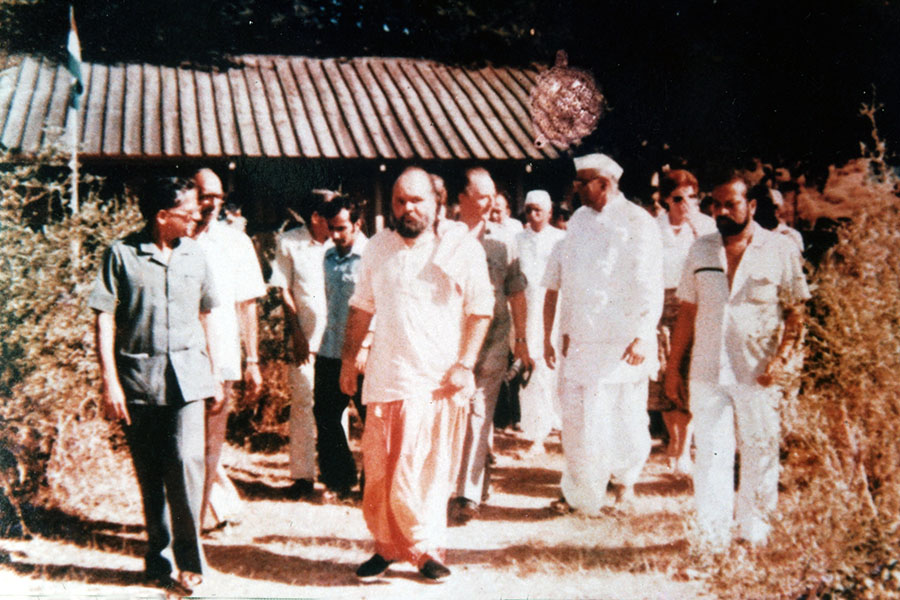
on 31st Oct 1985
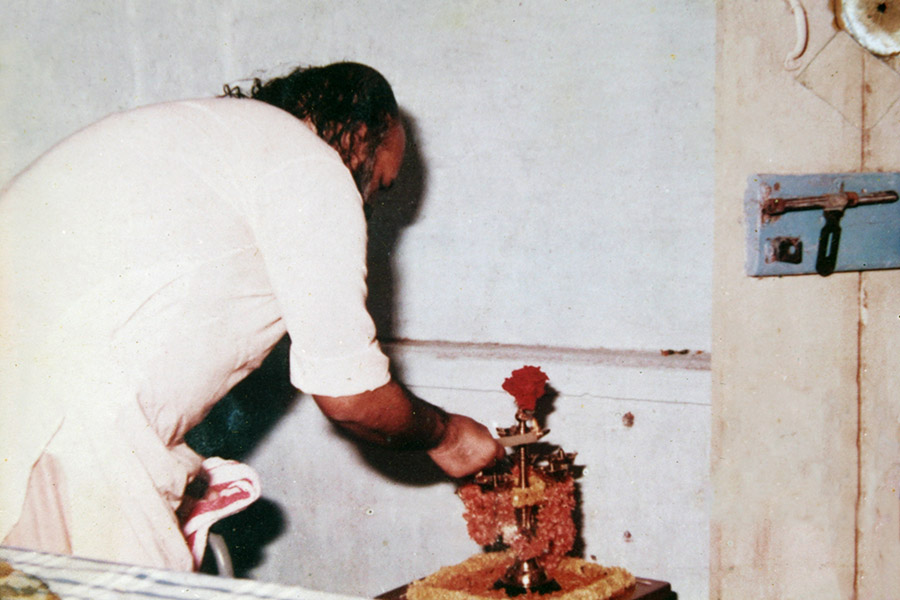

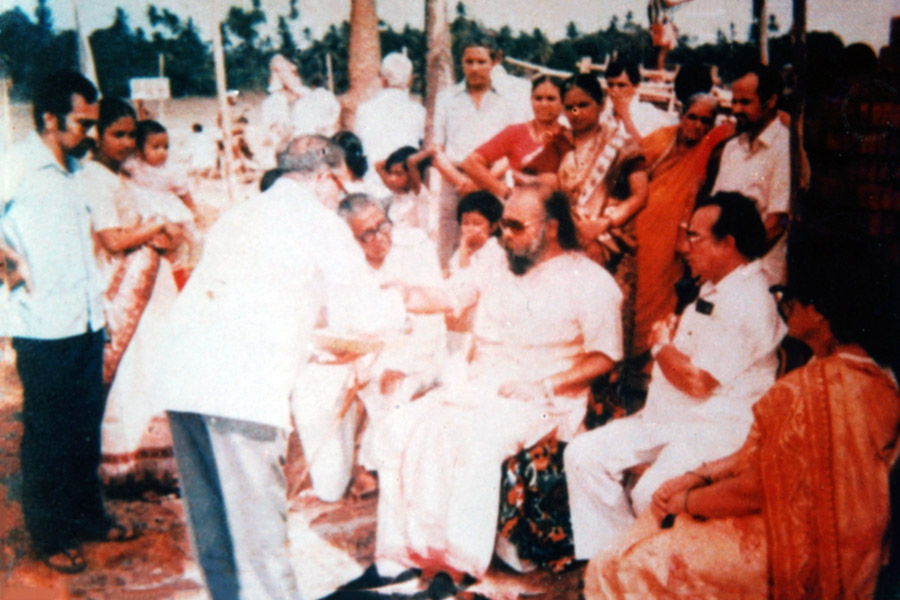
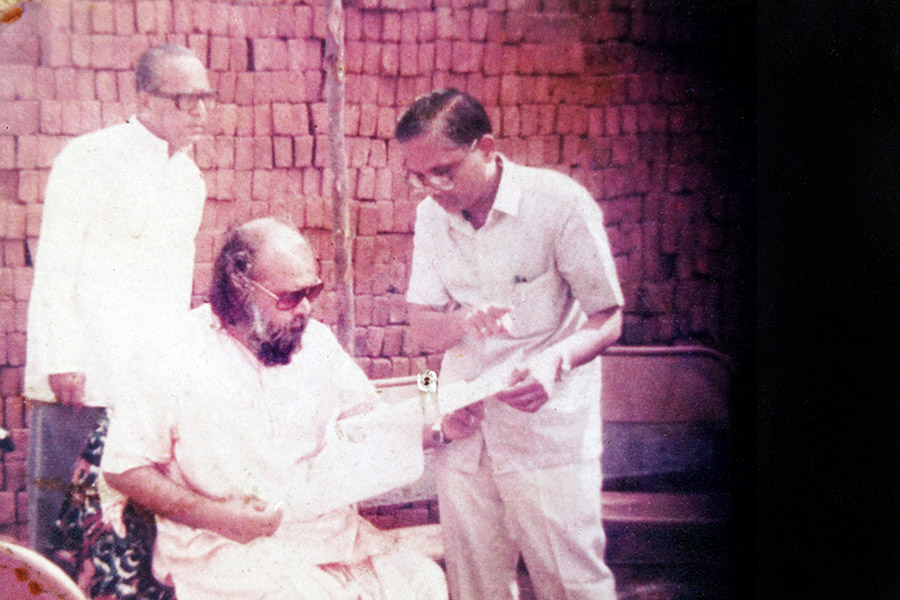
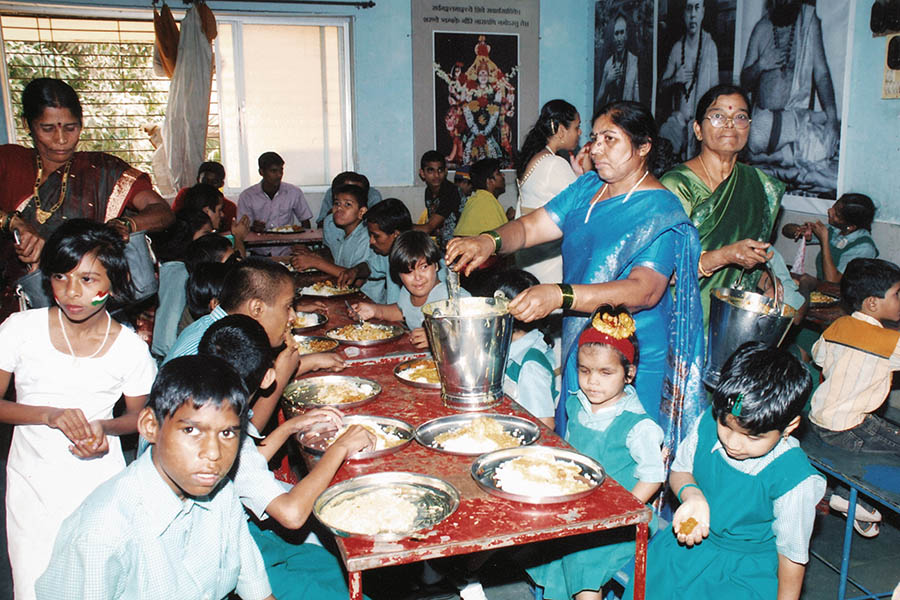

of SPEVC during the Annual day
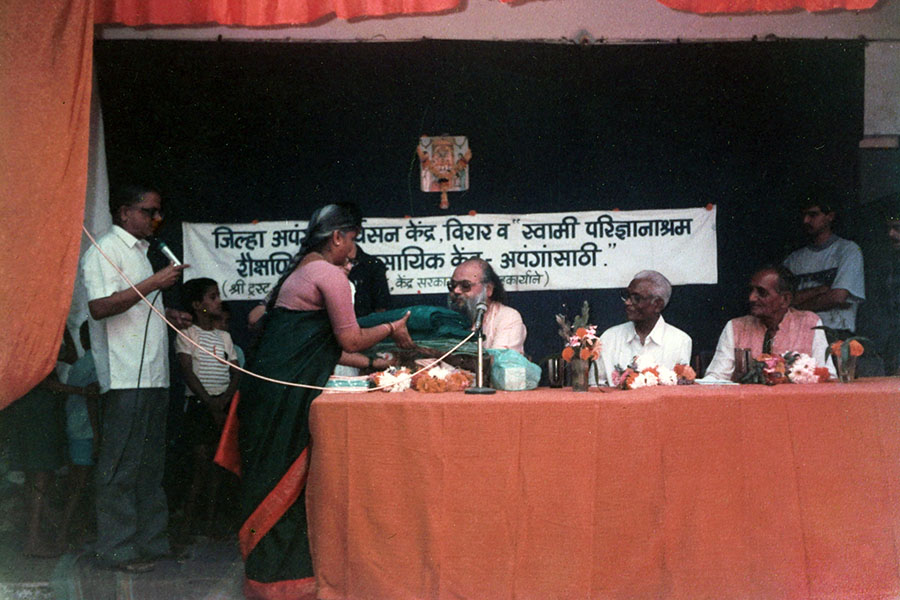
SPEVC Annual Day
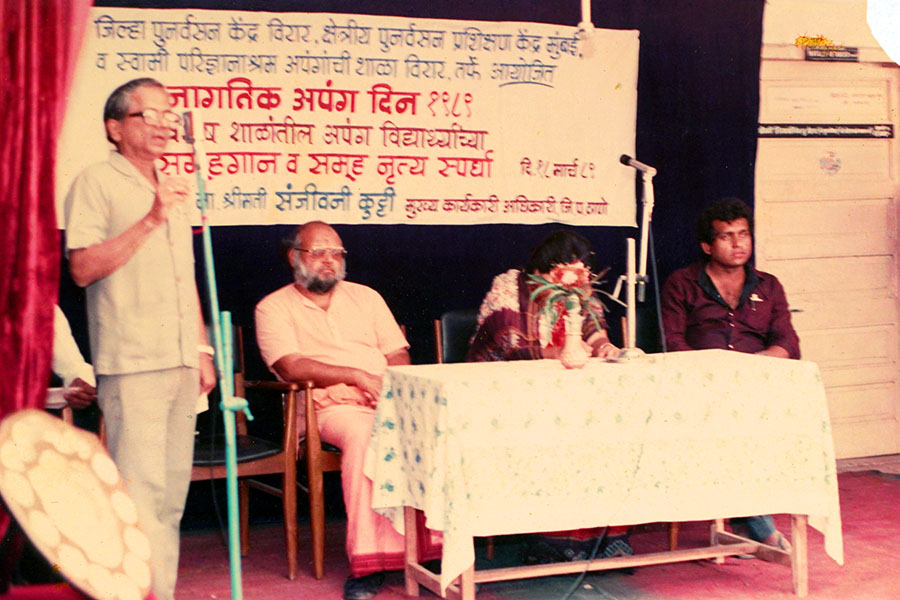
on 18th March 1989

performance by the children of SPEVC

present building
